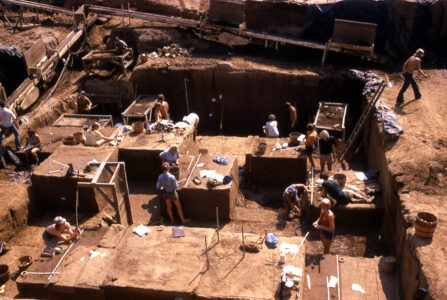Archaeological Field School, Lab Opportunities & Internships: Summer 2025

This curated compilation of archaeological field schools is provided as a convenient starting point for students seeking out archaeological field and lab experiences. The list is not complete, and we will add additional opportunities as we learn of them–please let us know of additional US and international field schools so we can consider including them. The text and images below are taken from each project’s website, through the links provided below. Note that Boston University is not affiliated with any of these projects. While we try to ensure that the information provided below is accurate, please be sure to get updated information frequently from each individual project’s website and field school director(s).
NOTE: Most of the information below describes Summer 2025 opportunities, some of the listings below still show 2024 information (shown below in GREEN font). Information for Summer 2026 will be updated as soon as we receive new information, typically in December and January. If you are interested in a field school that has not yet been updated below–especially those with early application dates– contact the director directly to find out their 2026 plans and application procedure.
Additional summer field school listings can be found at other excellent sites, including: https://www.archaeological.org/programs/professionals/fieldwork/afob/ https://rpanet.org/certified-field-schools
https://ifrglobal.org/programs/
https://www.bhfieldschool.org/program
Special note for Boston University Archaeology majors: You are reminded that all field schools must be pre-approved in order to meet the major’s archaeological field school requirement, and field schools offering transfer credits must be pre-approved by BU Study Abroad. If you are interested in the field schools listed below or others, discuss them with your faculty advisor and with the Archaeology DUS to ensure that they will meet the BU Archaeology Program’s requirements and, if applicable, will provide course credits that are transferable to BU.
At the bottom of this list, we offer a few potential opportunities for financial aid/scholarships to help offset the costs of participating in archaeological fieldwork and related cultural heritage opportunities.
We welcome your comments and suggested additions and edits to this list of archaeological field schools, lab opportunities, and museum internships! Please contact Robert Murowchick (Director of Undergraduate Studies, Archaeology Program, Boston University) at <remurow [at] bu.edu>
Content in this section:
- Potential Sources of Funding
- Fieldwork and Field School Opportunities – United States
- International Opportunities (alphabetical by country name)